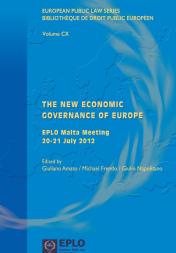
The Future of the (Digital) State
Lorenzo Casini
Professor of Administrative Law, IMT School for Advanced Studies (Lucca, Italy)
Can the digital revolution transform the very idea of the state and its functioning? This article investigates the ways in which technologies are influencing public institutions and their functioning, with particular regard to the contemporary and ‘democratic’ model of the state that was established in the 20th century. A first group of influences concerns the modes of exercising sovereignty and, in particular, the fundamental functions of the state. Therefore, the techniques of so-called direct democracy and their limits in pursuing the utopia of law-making by the people, the use of algorithms by judges, and the increasing spread of automated administrative decisions are examined. A second group of conditioning refers to the effects that the technological revolution has on the other two elements of the state, the people and the territory. Issues concerning the protection of fundamental rights, border crises, the relationship between technology and information and, consequently, between democracy and truth are then analyzed. From these constraints emerges a model based on ‘surveillance’, in which big data, their use and protection have acquired a strategic role. A model whose spread has undoubtedly increased with the pandemic, but also highlighted its limits and possible countermeasures. The digital revolution, the dominant role of Big Tech and social network, and the increasing use of artificial intelligence are profoundly affecting public institutions and civil society: what is the future of the (digital) State?
Keywords: State; digital revolution; algorithms; Artificial Intelligence; robot judges
La révolution numérique peut-elle transformer l’idée même de l’État et son fonctionnement? Cet article étudie la manière dont les technologies influencent les institutions publiques et leur fonctionnement, en particulier le modèle contemporain et “démocratique” de l’État qui s’est mis en place au XXe siècle. Un premier groupe d’influences concerne les modes d’exercice de la souveraineté, et en particulier les fonctions fondamentales de l’État. Sont donc examinées les techniques de la démocratie dite directe et leurs limites dans la poursuite de l’utopie de l’élaboration de la loi par le peuple, l’utilisation d’algorithmes par les juges et la diffusion croissante de décisions administratives automatisées. Un deuxième groupe d’influences concerne les effets de la révolution technologique sur les deux autres éléments de l’État, le peuple et le territoire. Les questions relatives à la protection des droits fondamentaux, aux crises aux frontières, à la relation entre la technologie et l’information et, par conséquent, entre la démocratie et la vérité sont alors analysées. De ces contraintes émerge un modèle basé sur la “surveillance”, dans lequel les big data (avalanches de données), leur utilisation et leur protection ont acquis un rôle stratégique. Un modèle dont la diffusion s’est sans doute accrue avec la pandémie, mais qui a aussi mis en évidence ses limites et les contre-mesures possibles. La révolution numérique, le rôle dominant des Big Tech et des réseaux sociaux, et l’utilisation croissante de l’intelligence artificielle affectent profondément les institutions publiques et la société civile: quel est l’avenir de l’État (numérique)?
Mots-clés: État; révolution numérique; algorithmes; intelligence artificielle; juges robots
*The paper largely reproduces an article previously published in BioLaw Journal, 2023/3, 241-273, and is herein published with permission.





















